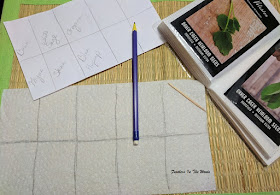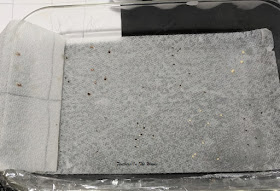I like to pre-germinate many of my seeds before planting. While you should start seeds indoors 6-8 weeks before you plant on transplanting them to the garden, I'm impatient (and don't mind if my house resembles a jungle for a month or two!)
Pre-germinating seeds (also called pre-sprouting) is a good idea especially if you're using older seeds. As seeds age they lose their viability. Many gardeners compensate for this by sowing extra seeds which then requires thinning.
Thinning often causes seedling loss, since extra seedlings need removed and trying to untangle their delicate roots often leads to damage in one or both seedlings. Many gardeners just snip off the extra seedling for this reason, instead of trying to save it.
This break my little garden loving heart! I prefer to only plant what I can actually grow, and by pre-sprouting seeds I know within a few days how many seedlings I have of each variety and can then pre-germinate more seeds if needed.
If I sow the seeds directly into potting soil I might need to wait a week or more till seedlings emerge to see how many are going to grow....and I'm impatient, remember? 😉
Pre-germinating seeds allows you to plant only the seeds which can develop. It also gives you a chance to see quickly if you have enough viable seeds for this season or if you need to buy more. This is especially important if you order your seeds online as they can take awhile to get to you, losing valuable growing time. (If you need to order heirloom seeds, get a catalog here, or here)
How to pre germinate seeds
Mark spaces out on a paper towel if using a large container. Draw a similar grid on a regular piece of paper. This will be your 'map', which you'll need because it's very easy to confuse which seeds are which! I used pencil on the paper towel this time, but a sharpie works well too.
If you use a marker, make sure it is completely dry before adding water or the color will bleed all over. If using smaller, individual containers just cut a piece of paper to fit the bottom and label the container with the seed variety.
Wet your paper towel so that it's pretty damp, but not wet enough that the water pools in the bottom. Place your seeds in each section on your wet paper towel, writing them down on the corresponding section of your seed map. Cover with another paper towel. This will keep the seeds from moving around if you have to add water to the container. Cover the container with plastic wrap.
I place the seed tray on a heated seed mat to speed up germination. It's important to know the temperature preferences of the seeds you're growing. Most seeds won't germinate in cold conditions, but some seeds don't germinate well in warm conditions.
I use this table from Oregonstate.edu to determine whether to use a heated seed mat or not. After 2 days, carefully peel back the top paper towel and check if the seeds have sprouted.
Gently remove the germinated seeds and plant in your seedling containers. Be very careful not to damage the sprouts as they are super delicate at this stage.
After you have removed all the germinated seeds, replace the top paper towel and the plastic and allow the remaining seeds another 2 days to germinate before checking on them. You may need to mist it with a little water to keep the seeds damp.
Some seeds take longer then others to germinate, but I check every 2 days so I can remove them as soon as possible. The more the seeds grow after germination, the easier it is to cause damage when moving them. They can grow into the paper towel or become tangled in each other. Moving them as soon as germination is apparent minimizes this risk.
The good news is that once seeds have germinated, they will continue to grow even if the soil temperature is slightly cooler. I keep my seedling trays at room temperature and they do great.
If you're not sure what you should plant in your garden this year, check out the 8 Questions You Should Ask Yourself Before Ordering Seeds.
~L
Want gardening and healthy living information sent right to your email weekly? Click right here to join my list and get new posts sent directly to you the day they're published!





Great information, but I have a couple of questions.First, do the seeds need to be in darkness when germinating? Also, after the seeds have germinated, what type of container and what growing medium do you use? Thanks so much!
ReplyDeleteI don't have mine in darkness while germinating. I move them to small seedling containers if their going into the garden or regular sized pots if they're going to be growing in those permanently. I use a seed starting potting soil mix from the garden store, but if you mix your own soil...that will work too.
DeleteGood luck!
Lisa
Like you said, if you wait till they germinate in the soil, it takes time to see how many are actually going to grow and it takes time out of your growing period. I keep my seeds for long periods of time, so I want to know right now if they are going to germinate or not. A couple of years ago I realized my seeds were just not germinating very well so I started pre-germinating them by putting them in little plastic containers with a piece of wet paper towel in it, like you mentioned. I then stick them in a plastic bag to let them start germinating. Having them in the plastic bag gives them more humidity, and, I think, it helps keep them warm.
ReplyDelete